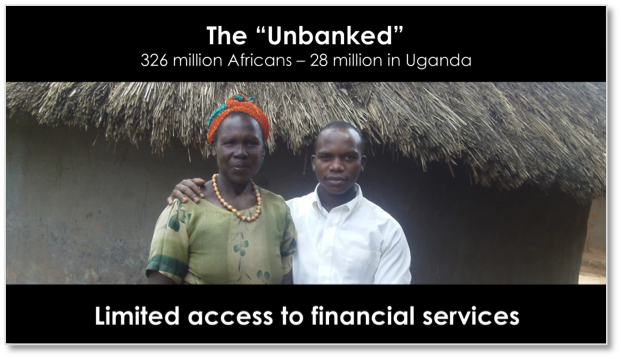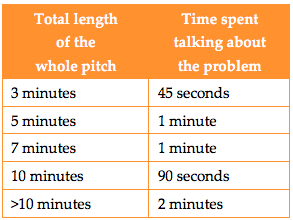More and more people want to…
THE AUDIENCE NEEDS to understand the importance of the problem. To ensure this, it is often useful to include a slide showing a major trend in your market.
RULE 17:
Trends convey the importance of a problem.
For many problems, you can find statistics, survey results, and other market research online or at your local library.
Ensibuuko—[Trends, first draft]

“In Uganda, 80% of the population, twenty-eight million people, are rural farmers and are un-banked.”
A statistic like this would be more compelling as a pie chart. If the trend were worsening, it would be yet more compelling as a graph. Either way, the data underlying the trend should be from a well-regarded source, and that source should be cited. If you can find a published chart from that source, use it directly rather than creating your own graph, as that will add further credibility to your presentation.
If there are multiple trends, explain how the problem you are addressing is the culmination or intersection of these trends.
Sometimes, there are no compelling trends to present. In these cases, do not stress finding a trend; instead, skip past this topic and move on to the next.
For Ensibuuko, the statistic is personal, and thus, rather than stating the dry fact, the second draft of this slide introduces Opio’s mother.
Ensibuuko—[Trends, second draft]

“In Uganda, 80% of the population are rural farmers and are un-banked. My mother is one of these farmers. She owns ten acres of land but can afford to farm on only two. Her situation is far from unique.”
In all cases, the section of the pitch that discusses the problem should be brief. The audience is far more interested in your solution, the opportunity, and your team than in the history of the market or the details of the problem.
RULE 18:
Don’t dwell on the problem.
Dwelling on the problem is a very common pitfall. I have seen dozens of pitches that spend half of the allotted time talking about the problem. These pitches fail to cover enough of the business for the audience to know whether there is a viable business being presented. When time is limited (and all pitches have limited time), cut out all but the most essential facts about the problem. Spend most of your precious time talking about your solution, your company, and the other details that will excite your audience.
Some general guidelines for the total time up through this point in a pitch vs. the total time of the pitch.












